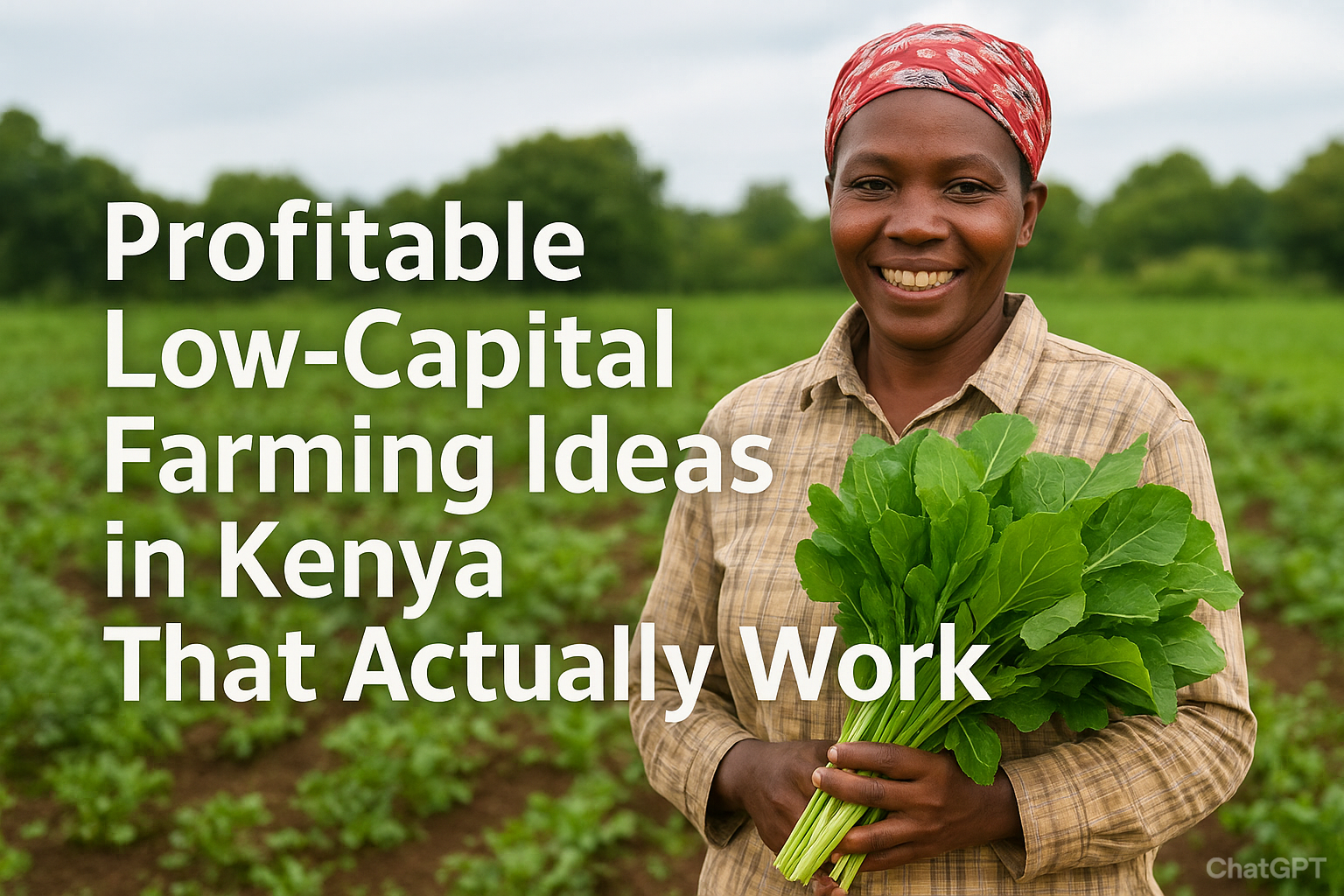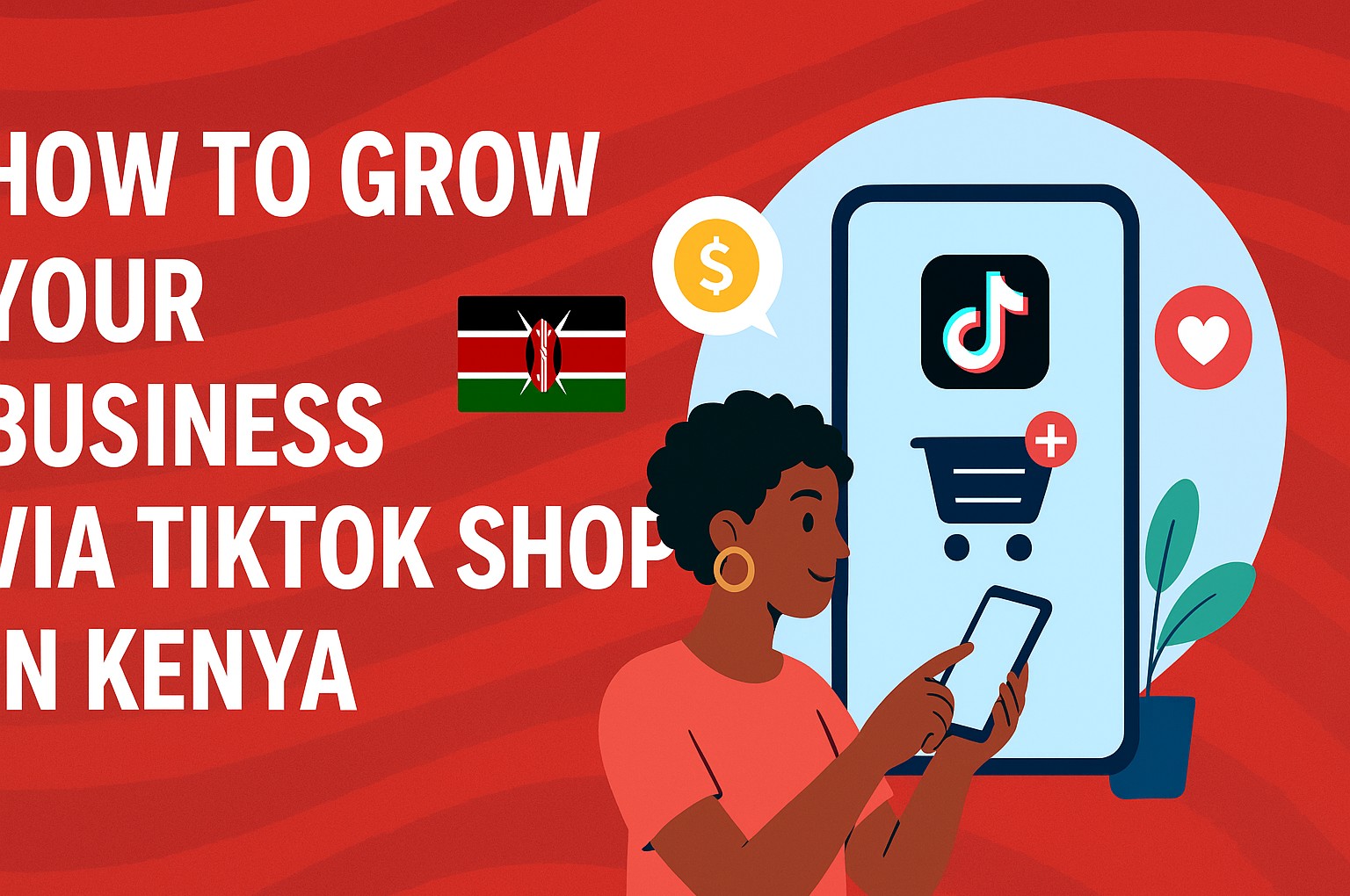

Titus Morebu
Author
Profitable Low-Capital Farming Ideas in Kenya That Actually Work
Discover small-scale farming ideas in Kenya with minimal startup costs—from indigenous veggies and beekeeping to seaweed and mushrooms—that deliver solid profits.
Introduction 🌱
Farming in Kenya doesn’t always need huge land or large capital. With smart choices, small plots, the right crops or animals, and access to markets, even modest investment can lead to good returns. Here are practical, profitable farming ideas in Kenya tailored for low startup cost, plus tips to help you succeed.
What Does “Little Capital” Mean?
- Startup investment under KES 50,000-200,000 depending on scale (small plot, backyard, or a few units).
- Use existing resources: spare land, home compounds, simple infrastructure.
- Focus on low input costs (fertiliser, feed, seed) and crops or animals with fast turnover or steady demand.
Factors to Consider Before Starting
- Soil & Climate Suitability: What grows well in your area—rainfall pattern, altitude, temperature?
- Market Demand & Access: Are there local buyers, markets, or buyers farther afield (urban centres, exporters)? Can you access them?
- Irrigation & Water Access: Even simple drip systems or water harvesting can hugely reduce risk.
- Disease & Pest Control: Choose disease resistant varieties; use integrated pest management; minimal chemicals if possible.
- Labour & Your Time: How much maintenance is needed? Do you have help? Many low-capital ideas require high care (harvesting, feeding, monitoring).
- Regulations & Certifications: Especially if targeting export or high end markets (e.g. for organic produce, spices, seaweed).
Top Profitable Farming Ideas With Little Capital
1. Indigenous & High-Value Vegetables
- Leafy greens: Cowpea leaves (kunde), black nightshade (managu), and other indigenous vegetables offer rapid harvest cycles (often ~30 days), low input costs, local demand. Great for backyard gardens or small plots. They resist many common pests. These crops are typical in small-scale Kenya farming guides.
- Herbs & spices: Coriander (dhania), basil, chilli, parsley. Seed is cheap; space needed is small. You can get high price per kilogram if quality is good and you target restaurants, hotels, and local markets.
2. Mushrooms
- Exotic types like oyster or shiitake mushrooms can be grown indoors on simple substrates (sawdust, straw). They need shade, moisture, cleanliness.
- Profit per small area is high; harvesting can start within a few weeks to months depending on type. With growing demand from restaurants, hotels, supermarkets, there is room to scale.
3. Poultry & Eggs
- Broilers: Meat chickens mature quickly (~6-8 weeks) and fetch good local market prices.
- Layers / Dual-purpose breeds: Eggs provide steady income. Indigenous breeds (“Kienyeji”) may have slower growth but lower input costs and better disease resistance.
- Minimal housing & feed setup; vaccination, feed efficiency, and market linkages are key.
4. Beekeeping & Honey Production
- Startup cost is low: a few hives, basic protective gear, smoker. Good for rural areas or even semi-urban with trees flowering.
- Honey, beeswax, propolis all have demand. Organic/honey brands fetch premium. Seasonal variations matter.
5. Fish Farming (Small Ponds or Tanks)
- Tilapia, catfish are popular. Small ponds or tanks can start with low capital if small‐scale, using recycled or local materials.
- Needs reliable water, feed, and some technical know-how (water quality, stocking rates).
6. Passion Fruit, Strawberries & Other High-Value Fruits
- Though initial establishment costs are higher than leafy vegetables, these fruits bring high returns per acre once mature. Especially in upland or favorable climate zones.
- Strawberries can also be grown in containers or small raised beds if you lack land, targeting niche markets or direct sales.
7. Seaweed Farming (Coastal Areas)
- If you live on or near the coast, seaweed farming has minimal land cost and growing demand regionally and globally for products like cosmetics, food additives, fertilizers. Profitable for community groups. It helps that many Kenyan coastal communities are benefitting already from seaweed farming as an alternative livelihood.
8. Small Ruminants & Indigenous Animals
- Goats, sheep, local chickens (Kienyeji) require less space, feed, and capital compared to cattle or big livestock. They allow quicker turnover (slaughter, sale, dairy in some cases).
- Indigenous breeds may be more robust to local disease and require less intensive inputs.
How Much Return Can You Expect?
Estimated returns depend heavily on scale, inputs, and market. Here are some indicative figures (these fluctuate):
- Leafy greens / indigenous vegetables: significant profit within 1-2 harvests (a month or two).
- Mushrooms: yields can cover cost and make profit on small scale within 1-2 harvest cycles.
- Poultry (broilers): profit margins of 20-50% on feed and chicks depending on market.
- High-value fruits (passion fruit, strawberries): profit per acre can run into hundreds of thousands of Kenyan shillings per season or year if managed well, but with higher initial costs.
- Fish farming or beekeeping: returns are lower startup, medium terms, but sustainable.
Cost-Saving Tips & Best Practices 🛠️
- Use recycled or locally available materials: e.g., building poultry houses from timber, using second-hand nettings, repurposed tanks.
- Intercropping: Grow fast-maturing crops between slower ones to maximize land use and income while waiting for larger harvests.
- Water harvesting / drip irrigation: Reduce water waste; provide crop security during dry spells.
- Value addition: Drying, packaging, simple processing (jams, dried fruit, marinated produce) increases income per unit.
- Engage in cooperatives or groups: Bulk buying of inputs, collective marketing lowers cost and raises bargaining power.
- Quality & consistency: Good produce sells better; poor grade reduces price significantly.
Challenges & Risk Mitigation
- Pests, diseases, fluctuating market prices: monitor, rotate crops, use pest-resistant varieties, maintain hygiene.
- Weather risk (drought, floods): diversify crops; use climate smart methods.
- Post-harvest losses: improve storage, drying facilities; don’t harvest all at once when market is glutted.
- Transport & logistics: ensure access to roads, markets; consider direct sales, online markets.
Conclusion
Even with little capital, profitable farming is possible in Kenya when you pick the right idea, use resources wisely, and plan carefully. Start small, stay consistent, learn continually, and scale up once you're managing risk well. With demand rising for fresh, organic, indigenous, and high-quality produce, there is room for many to succeed.
Further Reading & Resources
Gallery

Related Articles
3 articles
How to Become a Supplier to Supermarkets in Kenya – A Step-by-Step Guide 🌟
Learn how to register, pitch, and win supply contracts with Kenyan supermarkets. Step-by-step process, tips, and legal requirements — your roadmap to success.

Best Money-Saving Strategies for Kenyan Small Business Owners
Practical and actionable tips for small business owners in Kenya to cut costs, boost profits, and build resilience in 2025.

How to Grow Your Business via TikTok Shop in Kenya 🚀
Unlock TikTok Shop Kenya strategies to boost sales, visibility and customer trust with proven tactics for 2025 success.